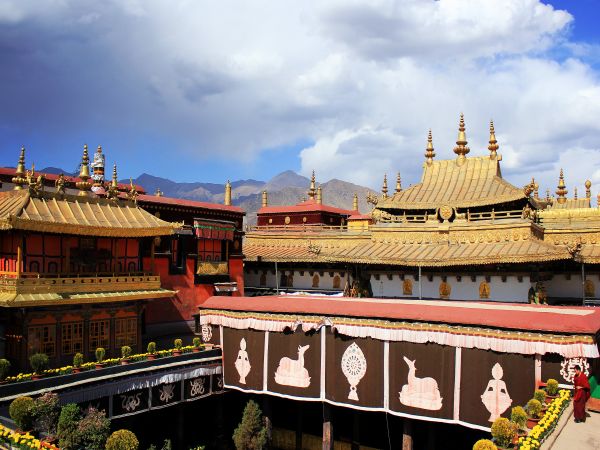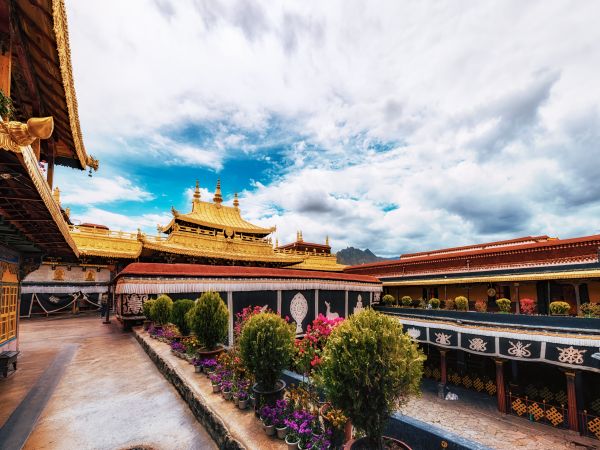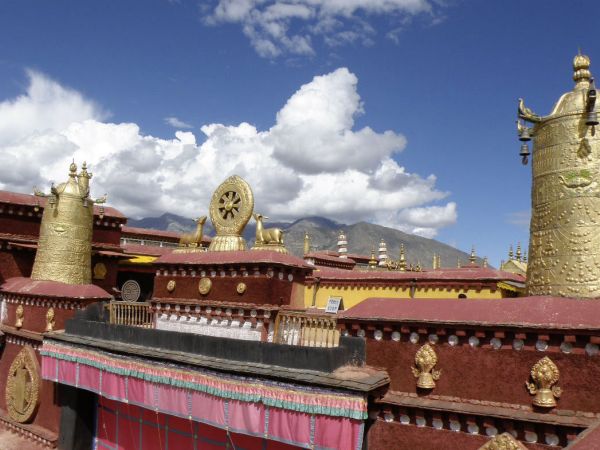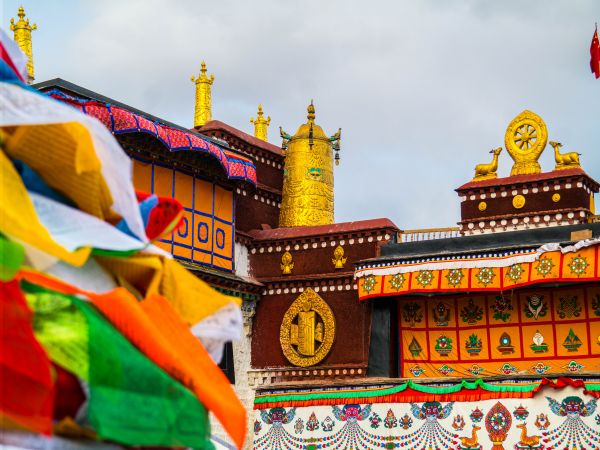Jokhang Temple
Jokhang Temple located in the old town of Lhasa, is like a shining jewel embedded in the architectural treasure of Tibetan temples. Its history is deep and long-standing. Although their stories have been recorded in many documents, to fully appreciate their comprehensive, accurate and profound content, we still need to explore them carefully.

History of Jokhang Temple
Jokhang Temple, founded during the reign of Songtsen Gampo of Tubo in the 7th century AD, has fallen on hard times, even suffering damage due to policies of suppression of Buddhism. However, during the second half of the 8th century AD, during the reign of Trisong Detsen of Tubo, Buddhism flourished again and the Jokhang Temple could be restored. Experts consider that the wooden sculptures in the central hall are the pinnacle of this era.

Highlights of Jokhang Temple
The Central Hall
The central hall of the Jokhang Temple is a treasure of architectural decorative art. Its exquisite interior decoration is like the paradise of wood carving art. On columns, capitals, crossbars, lintels, door frames and thresholds, leaves and flowers, clouds, celestial divinities, animals, human figures and geometric patterns are carefully carved, each detail brimming with vitality and creativity. These works are not only exquisite in their craftsmanship, but also display a unique and creative style, making one cannot help but sincerely admire them.
In addition to the splendor of the interior decoration, the exterior part of the central hall of Jokhang Temple is also impressive. The metal sculptures, especially the bronze ceiling sculptures, are considered the most outstanding in Tibet. Four golden domes stand at the four corners of the roof of the hall, majestic and luxurious, adding a touch of splendor to the architecture of Jokhang Temple. They not only symbolize the splendor and beauty of the temple but also carry deep cultural significance.

The Prayer Hall
Under these golden domes are hidden the secrets of the Jokhang Temple's prayer hall. The Shakyamuni Buddha Hall is located to the east of the central hall, and its golden dome highlights its supremacy. To the north of the central hall is the Eleven-Faced Hall of Avalokiteshvara, a figure with special status in Tibetan Buddhism, and its golden dome also highlights his importance. To the south is the Hall of the Future Buddha, where every year, after the Great Festival of Light in Lhasa, a grand ceremony is held to invite the image of the Future Buddha to walk around Barkhor Street as an omen of good luck. On this day, Barkhor Street is packed with people, with thousands of people worshiping.
The Golden Domes
The architectural style of Jokhang Temple is in line with the construction style of palaces, with its majestic golden domes and exquisite bronze decorations, reflecting the wisdom and talent of the Tibetan people. These constructions are not only the embodiment of symmetrical beauty, but are also treasures of Tibetan culture. Standing on the roof of the central hall of Jokhang Temple and looking at the four golden domes, it is inevitable to feel the profound significance of its existence. They are not only architectural decorations, but also symbols of Tibetan culture and the perfect fusion of history and modernity.

Gilded Bronze Sculptures
In addition to the four golden domes, the ceiling of the central hall of Jokhang Temple is also decorated with gilded bronze sculptures of Victory, jugs, animal-headed figures, dragon heads, deer with dharma wheel, animal helmets and parasols made of hair. On the second floor, there are carved bronze eaves and below these, there are bronze reliefs, which surround the third floor. The ceiling of the central hall of the temple is decorated with golden light, highlighting the majesty of this sacred hall. Therefore, it is natural to associate Jokhang Temple with the three-dimensional Bronze-Domed City when we see it.
The Jokhang Temple occupies a very high position in the history of Tibetan civilization and enjoys undisputed supremacy in the minds of the followers of Tibetan Buddhism. Although it has gone through ups and downs for a thousand years, with moments of destruction and reconstruction, its splendor has not been diminished in the slightest and remains as sublime and desired as ever.

















